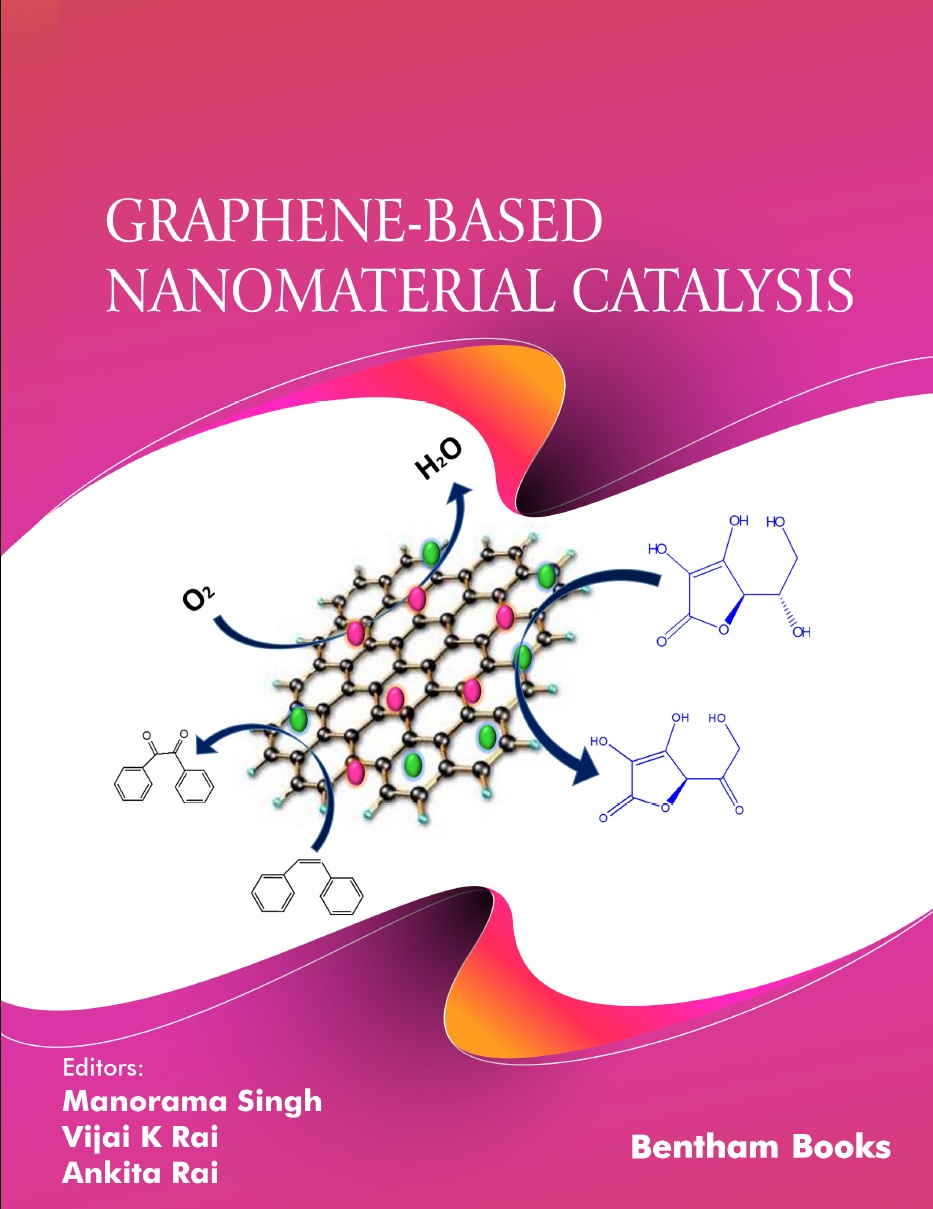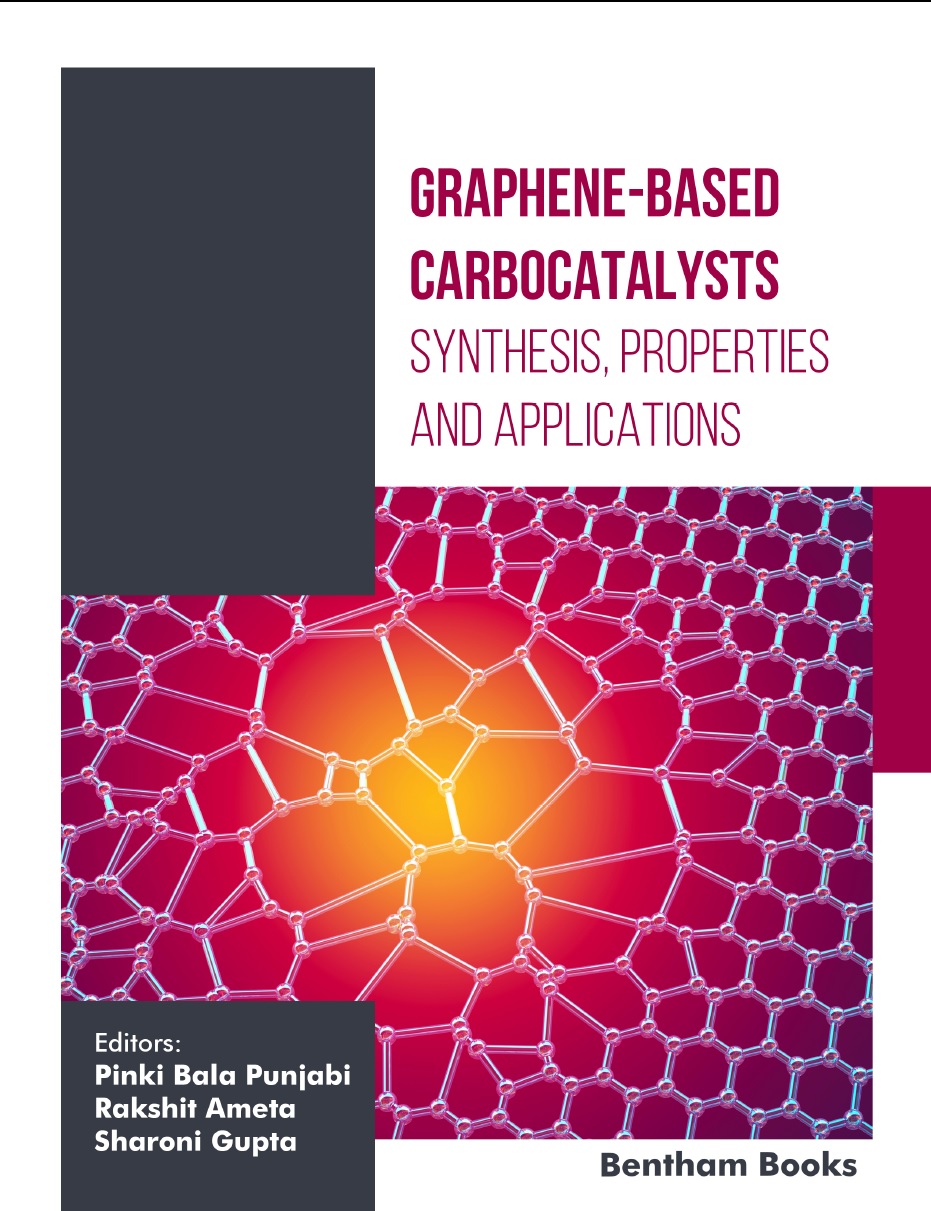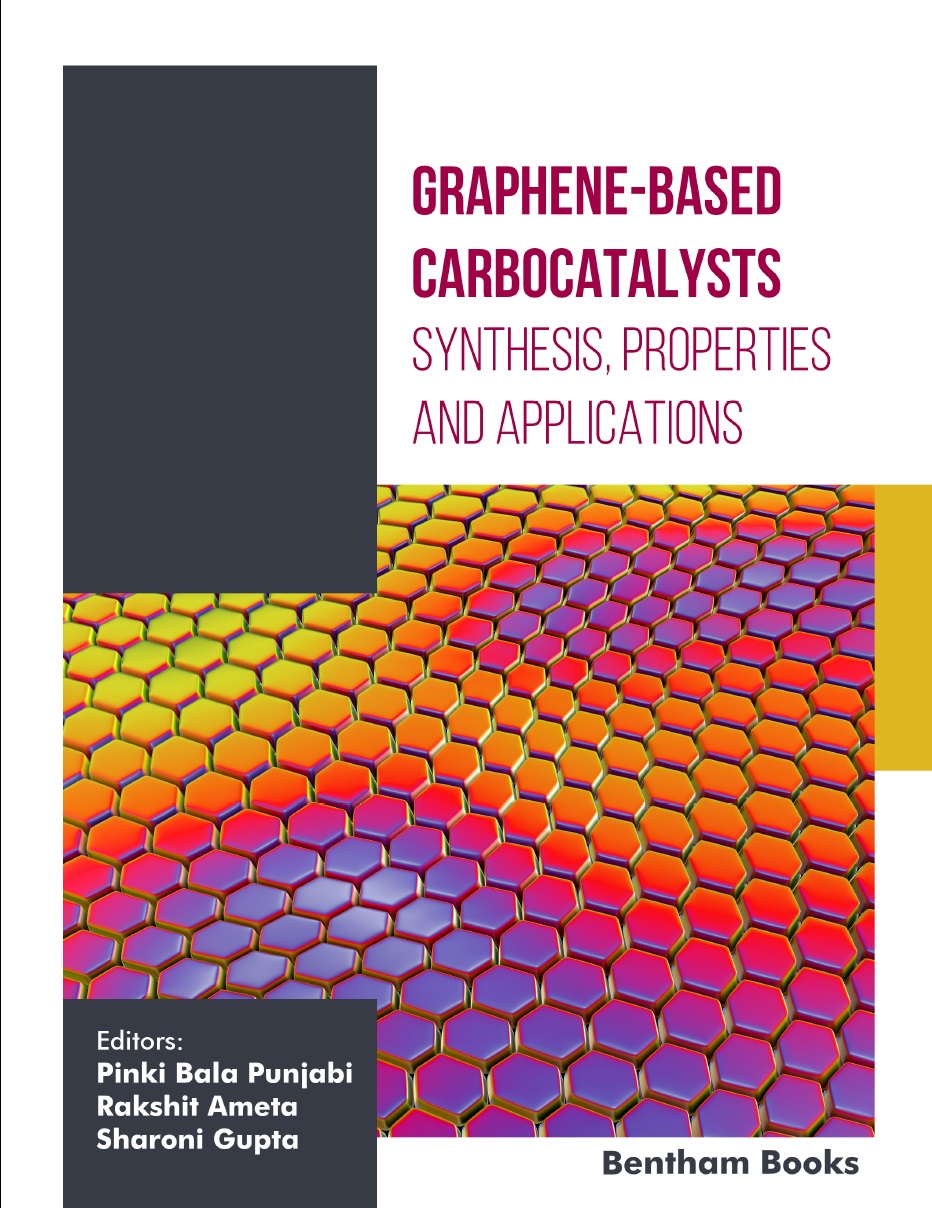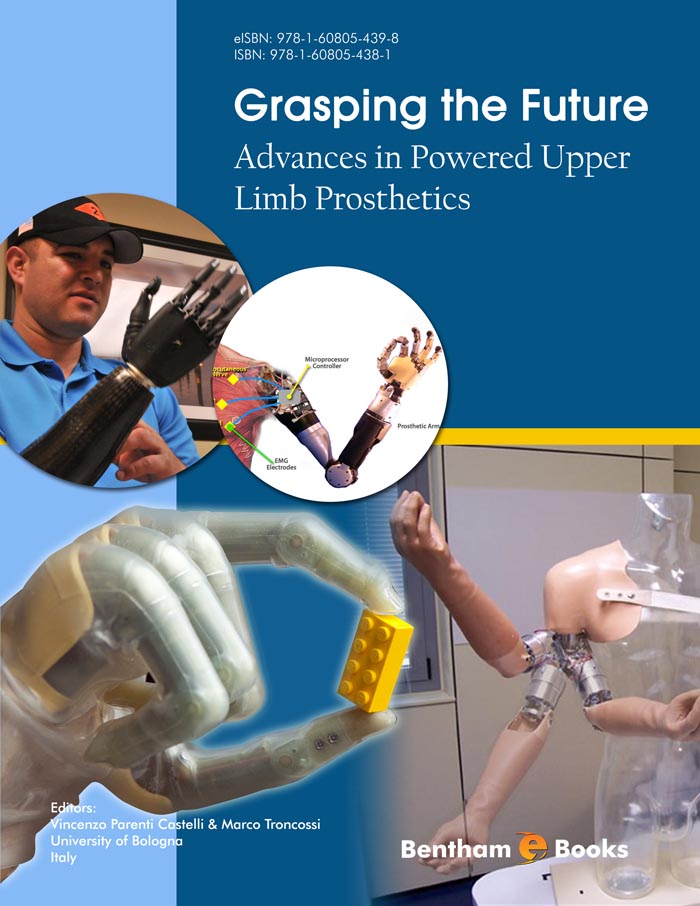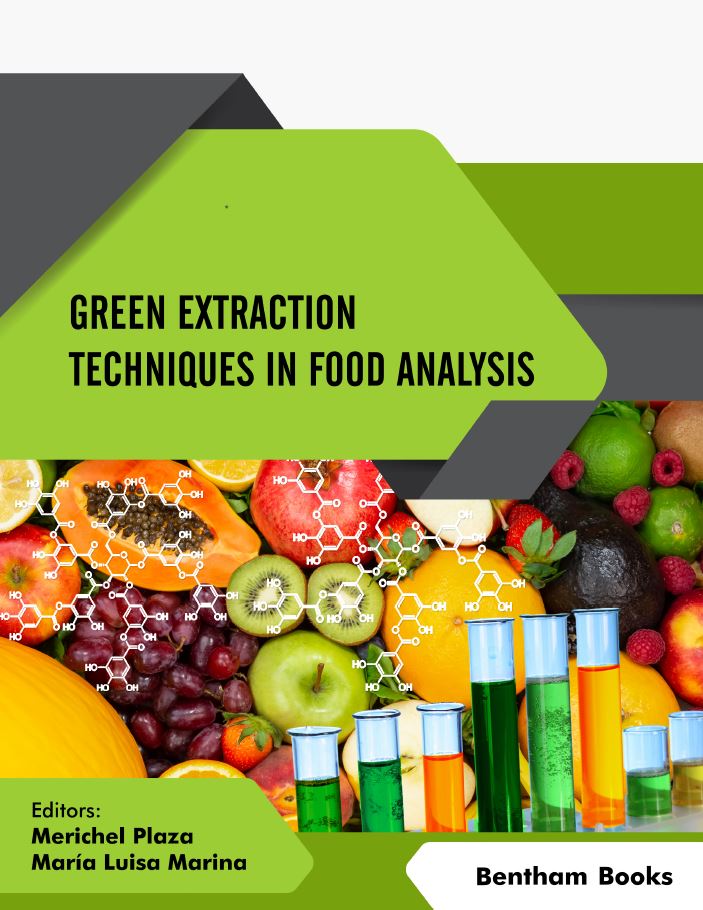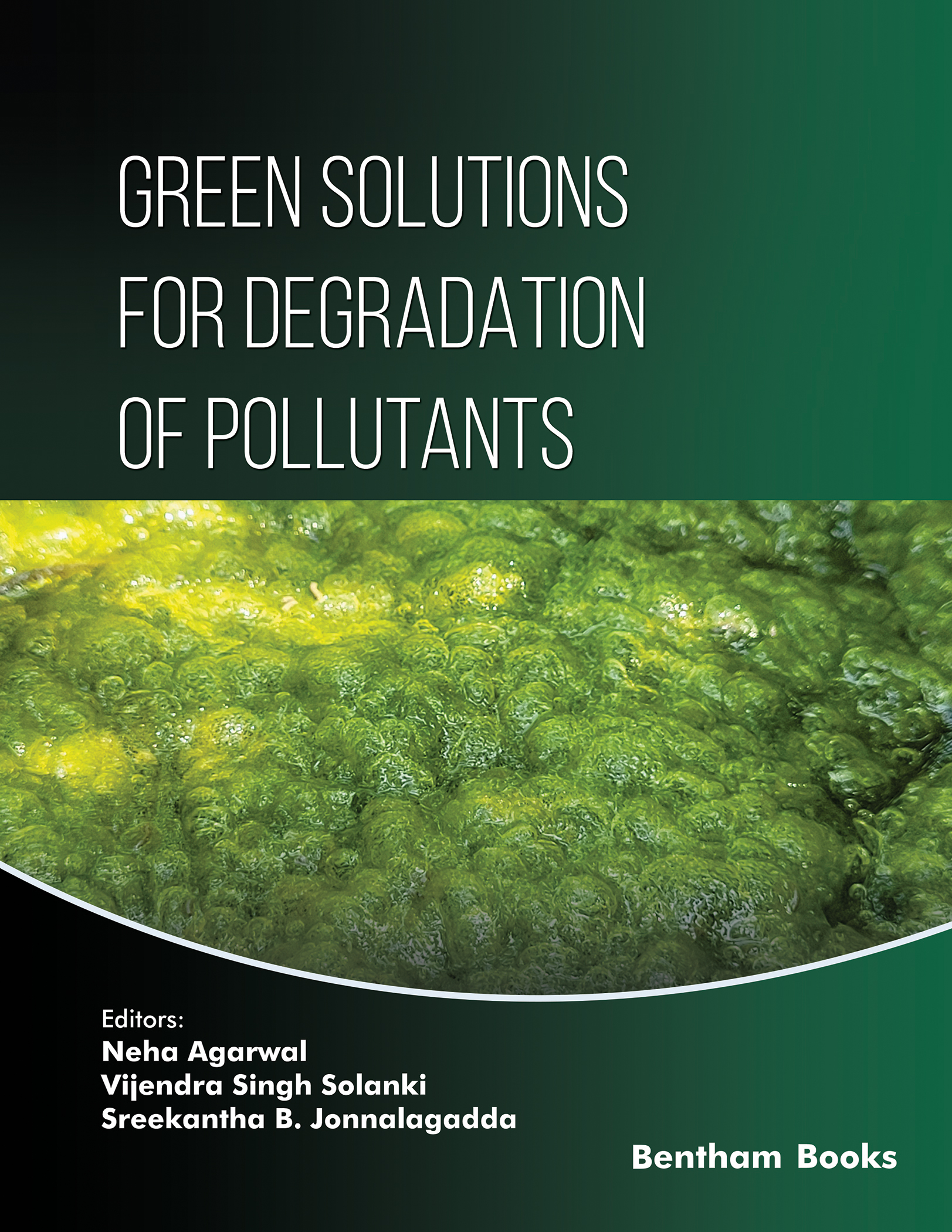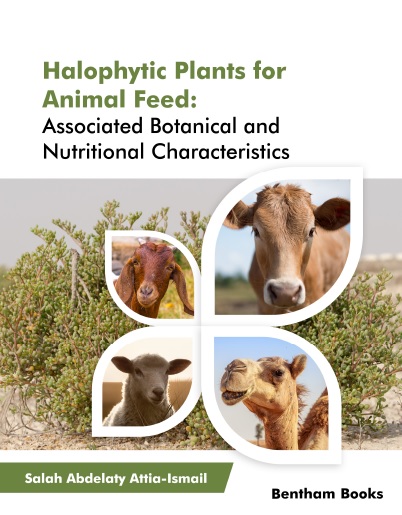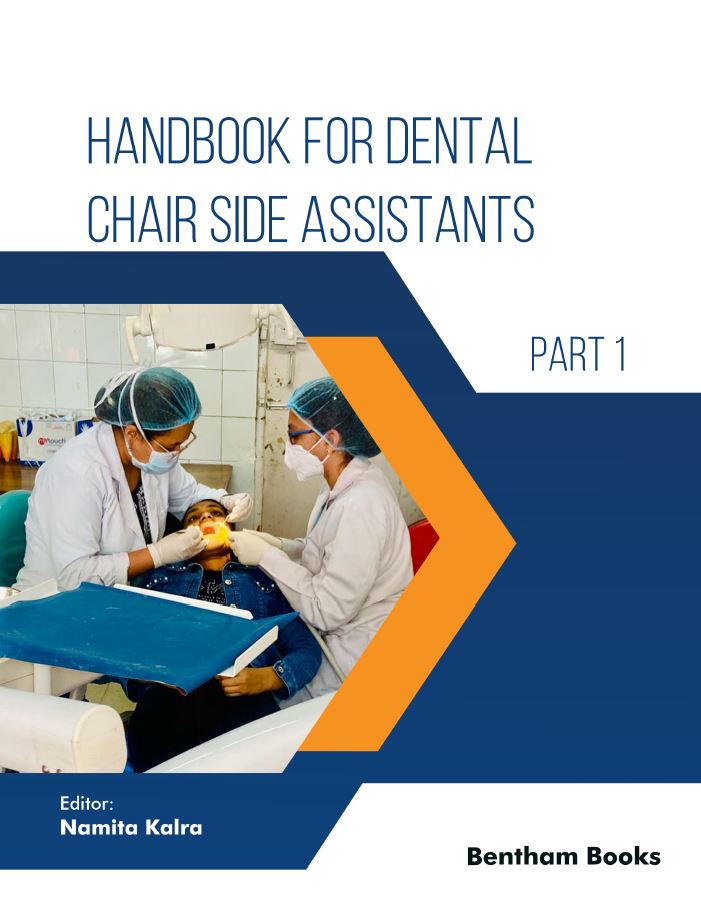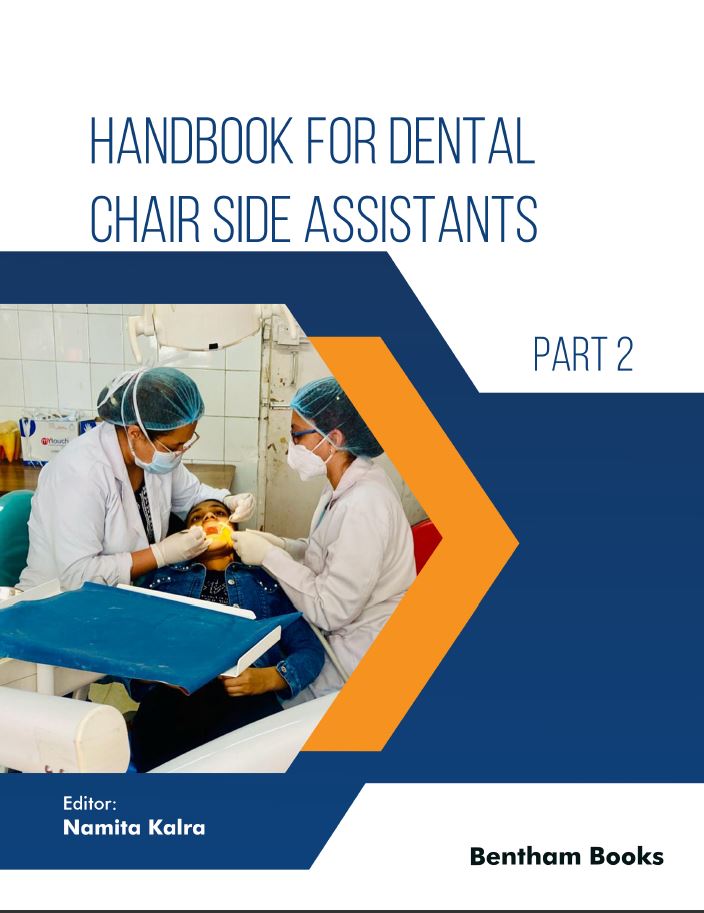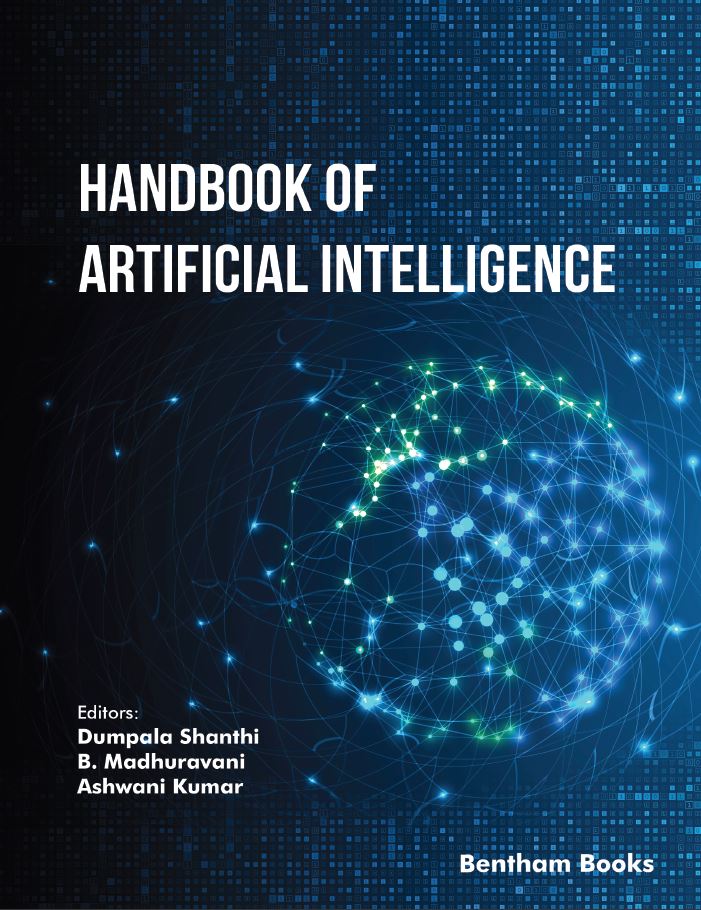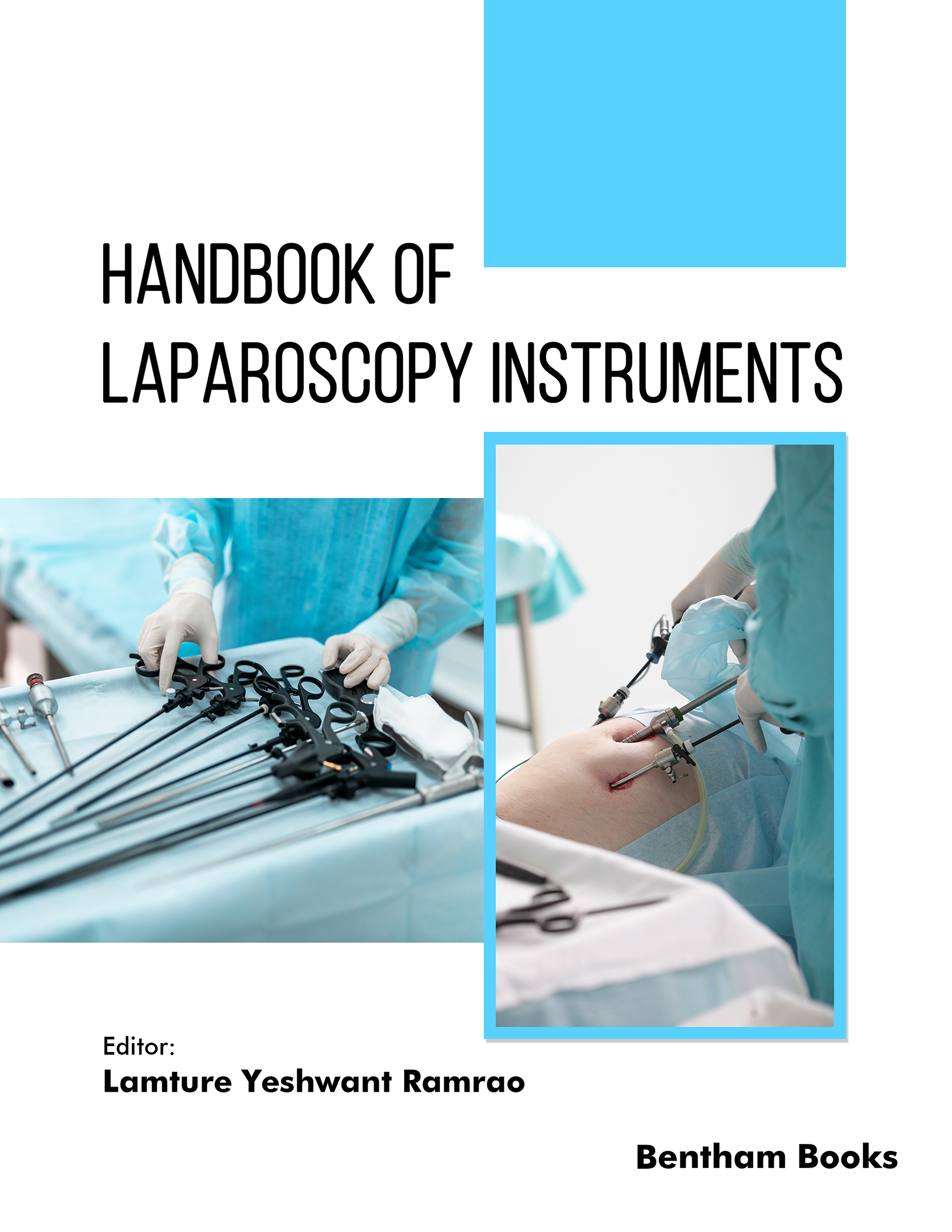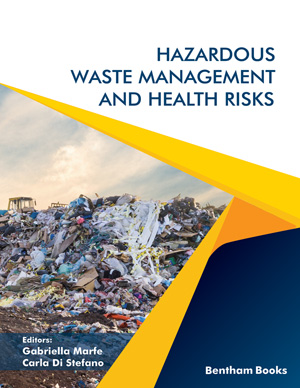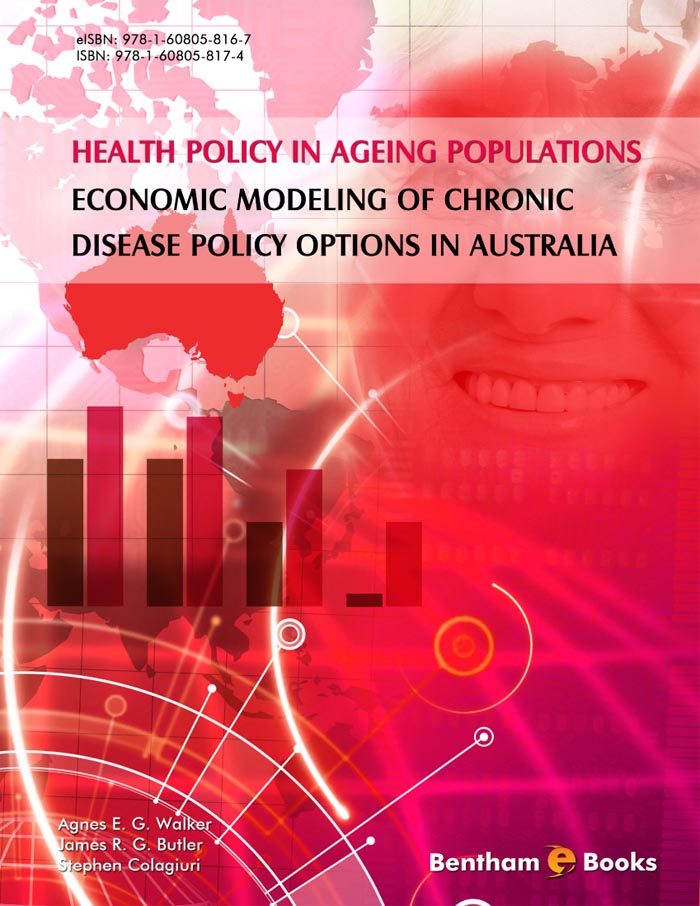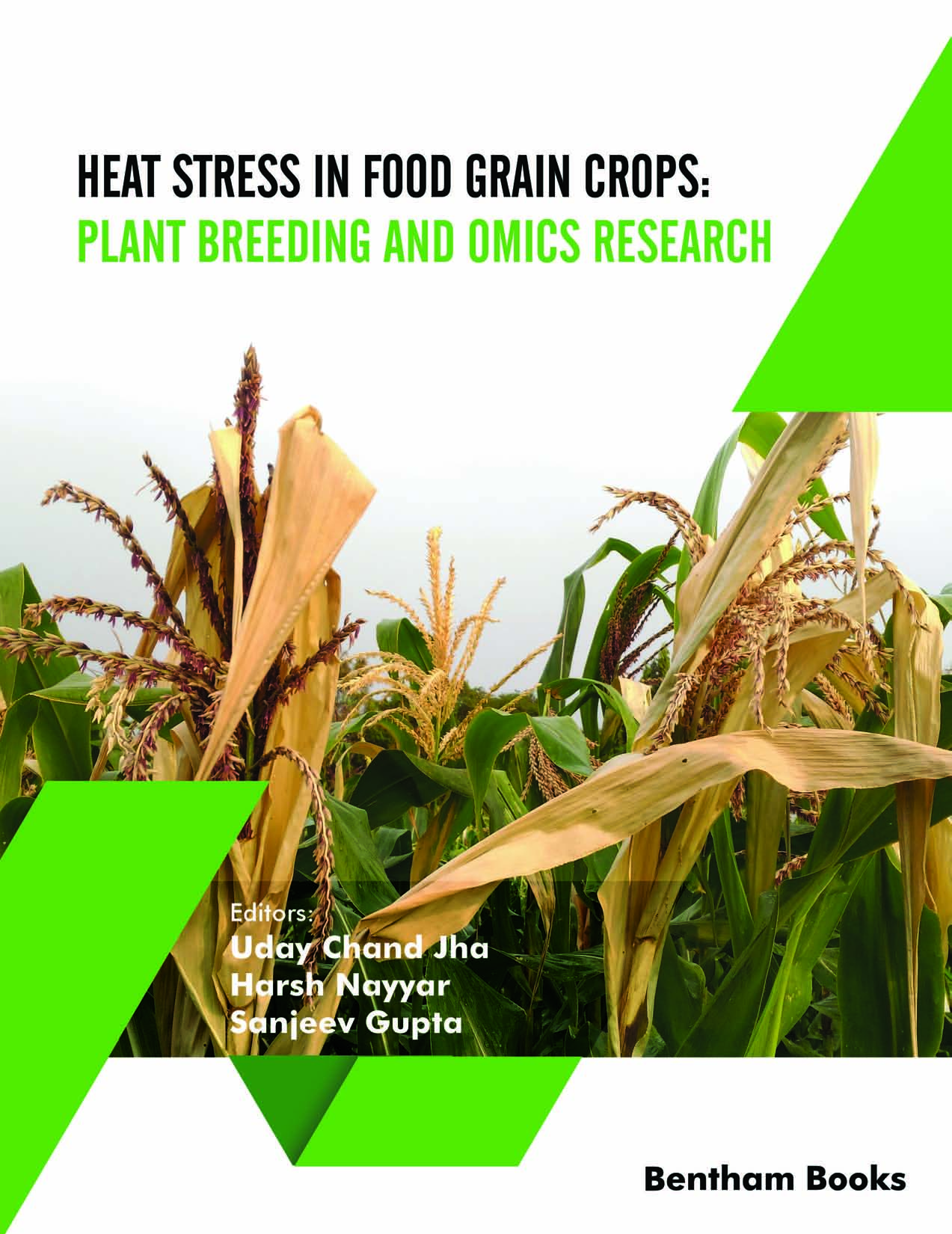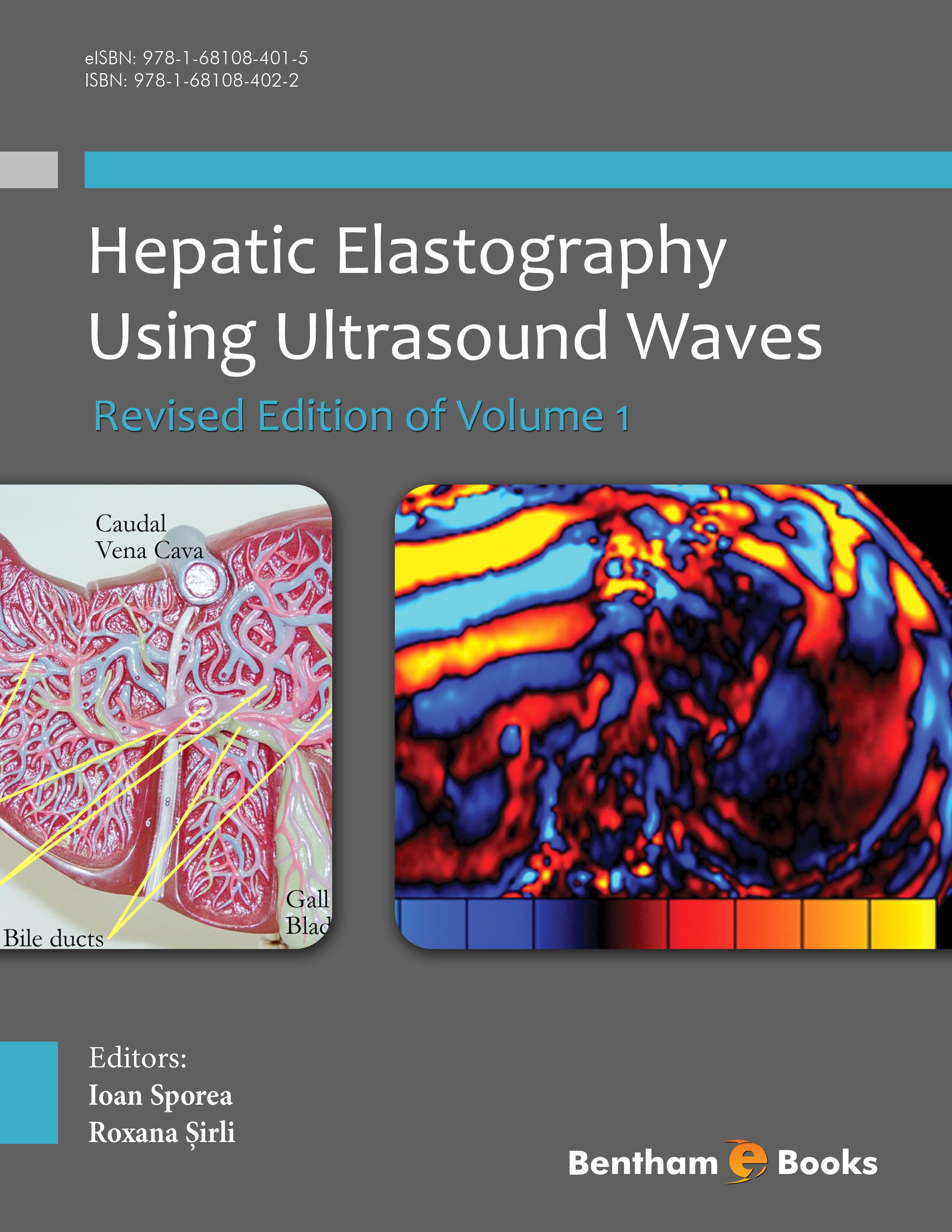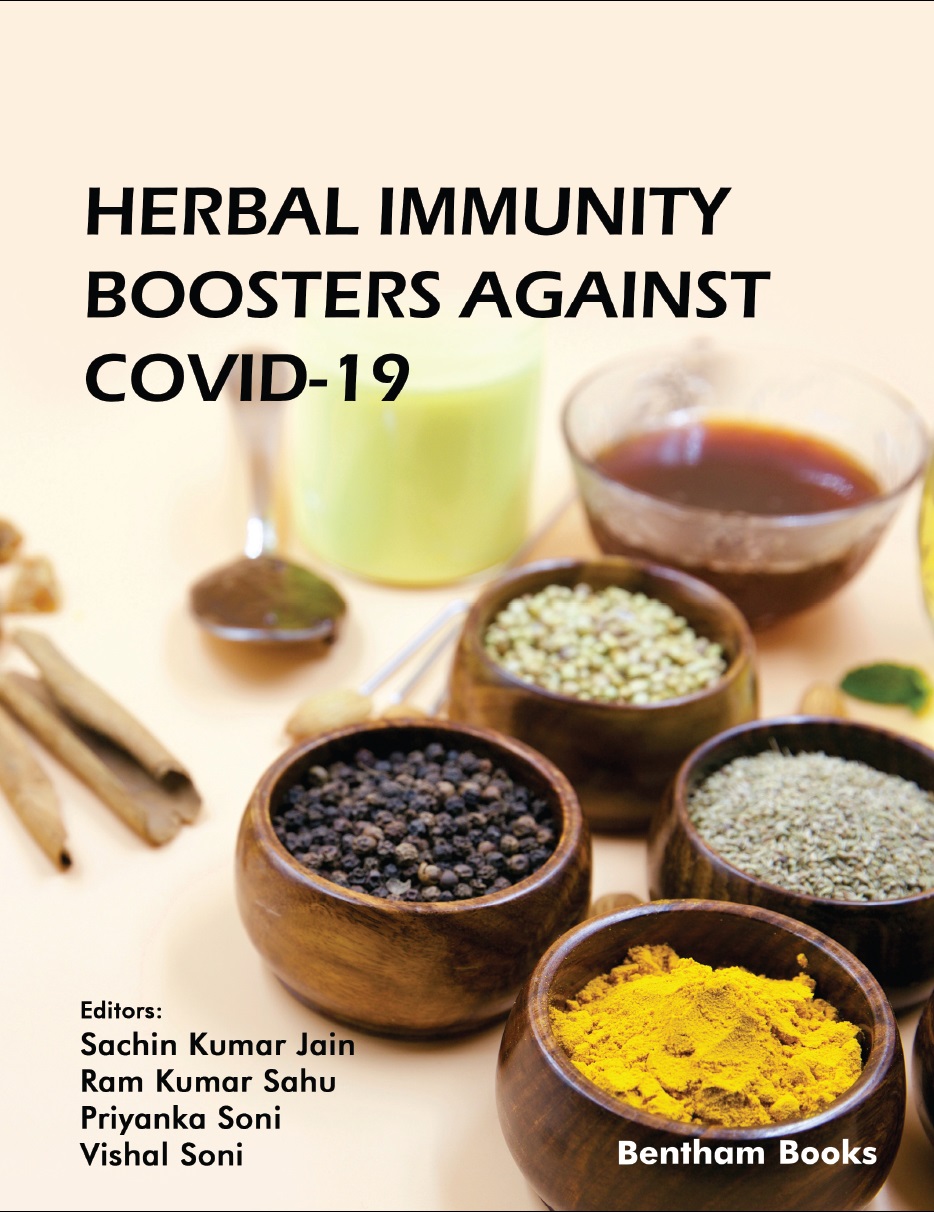- Home
- Publishers
- Bentham Science Publishers
Bentham Science Publishers
Bentham Science Publishers is a major publisher of more than 100 peer-reviewed science, technology and medical (STM) journals, along with a rapidly growing collection of eBooks. Since 1993, Bentham Science Publishers has been catering to the information needs of the pharmaceutical, engineering, biomedical and medical research community.421 - 440 of 812 results
-
-
Global Emerging Innovation Summit (GEIS-2021)
More LessThis Global Emerging Innovation Summit (GEIS 2021) book summarizes the proceedings of the international summit held on April 9th and 10th, 2021. The meeting was organized by Lovely Professional University (LPU) and supported by ENEA - the National Agency for New Technologies, Energy and Sustainable Economic Development.
GEIS-2021 is the most comprehensive conference focused on the diverse facets of the innovations in different technical domains. The goal of this conference is to bring together researchers from academia and industry as well as practitioners in allied fields to share their ideas and solutions related to issues and challenges that rely on the use of technology. The conference highlights the multifaceted nature of innovation in engineering and natural sciences. Attendees are given an opportunity to exchange new ideas to establish research relations to find global partners for future collaboration.
Authors from academics, government agencies and industries, contributed several papers which truly make the conference a diverse and unique platform in the region for a productive and interdisciplinary dialogue. This volume features 59 contributions which were selected after review by the editors.
Chapters cover emerging developments in a broad range sectors including aviation, transportation, pharmaceutical chemistry, medicine, life sciences, space science, electronics, security, artificial intelligence, communications, energy and much more.
This compilation is a handy resource for readers who are seeking updates in the latest trends and innovative developments in technology and engineering.
-
-
-
Graphene-Based Nanomaterial Catalysis
More LessGraphene-Based Nanomaterial Catalysis compiles knowledge about catalytic graphene-based nanomaterials in a single easy-to-read volume. The text serves to familiarize scholars and professionals with the methods of fabrication of both functionalized and non-functionalized graphene nanomaterials suitable for use in a variety of applications such as electrochemical sensors, oxygen and hydrogen production, fuel cells and organic transformations.
Key Features
- systematic chapters which present the topic in an accessible way that is targeted towards learners
- Accessible information about the fabrication of graphene-based catalysts
- updated knowledge about catalytic applications of graphene-based nanomaterials in electro- and organic catalysis.
- delivers information about recent trends in industry and research.
- covers sophisticated green technologies such as carbon dioxide conversion and solar powered water splitting
- references for further reading
Interested students in material science at undergraduate, graduate and postgraduate levels in the disciplines of chemical engineering and materials science will highly benefit from the information in this reference. The reference also gives researchers in both industry and academia an opportunity to update their knowledge of graphene-based nanomaterials useful for catalysis.
-
-
-
Graphene-based Carbocatalysis: Synthesis, Properties and Applications (Volume 2)
More LessThis book informs readers about recent advances in graphene carbocatalysis encapsulating the current developments in the syntheses, properties, characterizations, functionalization and catalytic applications of graphene, its derivatives and composites. It serves as a comprehensive primary reference book for chemistry and engineering students who are required to learn about graphene chemistry in detail. It also serves as an introductory reference for industry professionals and researchers who are interested in graphene research as well as its emerging applications in catalysis and beyond.
Volume 2 presents information about the industrial applications of graphene-based materials. It starts with graphene-based photocatalysis and progresses into the electrochemical applications of related materials. Highlighted applications in this domain include the use of graphene for hydrogen production and in electrodes for electrochemical sensors. It also covers developments in graphene-based smart energy materials. The final chapter of the volume summarizes the future of graphene-based material technology.
-
-
-
Graphene-based Carbocatalysis: Synthesis, Properties and Applications: Volume 1
More LessThis book informs readers about recent advances in graphene carbocatalysis encapsulating the current developments in the syntheses, properties, characterizations, functionalization and catalytic applications of graphene, its derivatives and composites. It serves as a comprehensive primary reference book for chemistry and engineering students who are required to learn about graphene chemistry in detail. It also serves as an introductory reference for industry professionals and researchers who are interested in graphene research as well as its emerging applications in catalysis and beyond. Volume 1 provides an introduction to catalysis and the chemistry of graphene. This is followed by chapters that cover the chemistry of graphene compounds. Next, it covers the functionalization of graphene into catalytic materials and its role in the synthesis of nanocomposites. Finally, the book delves into the complex aspects of graphene carbocatalysis: recent advances in graphene supported palladium catalysts for coupling reactions, applications of graphene-based catalysts in multicomponent, domino reactions, oxidation and reduction reactions, and recent trends in biocatalytic properties of graphene-based composites are all discussed in detail.
-
-
-
Grasping the Future: Advances in Powered Upper Limb Prosthetics
More LessThe technological level of upper limb prostheses has always been fairly poor so far if compared with that of other analogous systems (e.g. lower limb prostheses, assistive robots). However, there is no doubt that in the recent years the upper limb research stimulated the most exciting developments in prosthetic technology. Indeed, new terminal devices and novel articulations for the artificial arm have been recently proposed, and the control hardware, software and firmware are in continuous progress for the implementation of effective control options for the wearers as well as for an easier management of the electronic boards. Also the clinical treatment of the patients is significantly improving. This e-book illustrates significant milestones reached by the scientists in prosthetic research considering both technical issues and clinical features, and also sheds lights on new trends and future developments of this field.
-
-
-
Green Extraction Techniques in Food Analysis
Current and Future Developments in Food Science: Volume 3
More LessThis book aims to inform readers about the latest trends in environment-friendly extraction techniques in food analysis. Fourteen edited chapters cover relevant topics. These topics include a primer green food analysis and extraction, environment-friendly solvents, (such as deep eutectic solvents, ionic liquids, and supramolecular solvents), and different extraction techniques.
Key Features
- Includes topics for basic and advanced readers
- Covers a wide range of green solvents for food analysis
- Emphasizes modern extraction techniques (including supercritical fluid extraction, the gas expanded liquid extraction, pressurized liquid extraction, microwave-assisted extraction, pulse electric field extraction)
- Provides notes on selection of solvents
- Includes references for every chapter The blend of fundamental and applied information makes this an ideal reference for food chemistry students and research scholars. It also serves as a guide for professional experts working in food analysis and sustainability roles.
-
-
-
Green Industrial Applications of Artificial Intelligence and Internet of Things
More LessThis book explores the intersection of the Internet of Things (IoT) and Artificial Intelligence (AI) in sustaining a green environment, sustainable societies, and thriving industries. It offers a comprehensive exploration of how these technologies intersect and transform various sectors to enhance environmental conservation, societal well-being, and industrial progress. The book features a diverse array of case studies, methodologies, and notes on technological advancements. Readers will gain valuable insights into the impact of AI and IoT on sustainable initiatives through real-world examples, research findings, and discussions on future directions.
Key themes
AI in complex and versatile scenarios: Chapters 1 and 4 explore AI applications in combatant identification and COVID-19 monitoring
IoT for efficiency and data-driven decision-making: Chapters 2, 3, and 7 focus on IoT implementations in battery monitoring for electric vehicles, healthcare systems, and precision farming
AI for diagnostics and computer vision: Chapters 5, 9, and 13 highlight AI-driven solutions for plant disease detection, fetal spine disorder detection, and defect detection
Industry applications: Chapters 6, 8, 10, 11, 12, 14, 15, 16, and 17 cover AI and IoT in healthcare, transportation, supply chain management, endangered species protection, crop management, and pollution detection, showcasing their transformative potential across various domains.
This book is ideal for readers with multidisciplinary backgrounds, including researchers, academics, professionals, and students interested in IoT, AI, environmental sustainability, healthcare, agriculture, smart technologies, and industrial innovation.
-
-
-
Green Plant Extract-Based Synthesis of Multifunctional Nanoparticles and their Biological Activities
More LessThe convergence of nanotechnology with agriculture has transformed farming, while also impacting medicine, biotechnology and environmental science. Plant extracts isolated using new technologies have been used to successfully create new medicines for specific diseases. This book focuses on the eco-friendly synthesis of plant extracts. It provides information about multifunctional nanoparticles, and their versatile applications, including agriculture, food safety, and environmental remediation.
The book aims to bridge the gap between nanotechnology and public perception, addressing concerns related to health and environmental impact. Themes within the book span across green synthesis techniques for noble metal nanoparticles, the crucial role of analytical methods in characterizing these 'nanomaterials' and the comprehensive examination of how nanoparticles interact with the human body. Furthermore, the intricate relationships between proteins and nanoparticles is highlighted to explain the physicochemical effects and toxicity of nanomaterials. Readers will learn about sustainable and environmentally friendly approaches for synthesizing nanoparticles, while getting a glimpse of the promising future of nanotechnology in agriculture and beyond.
-
-
-
Green Solutions for Degradation of Pollutants
More LessGreen Solutions for Degradation of Pollutants is a compilation of reviews on environmental remediation by sustainable techniques. The book helps readers understand the potential of such techniques in resolving the growing problem of environmental pollutants.
The editors have compiled 13 comprehensive reviews on green remediation techniques such as microbial bioremediation, nano-bioremediation, phytoremediation, and green-nanoremediation for the remediation of a variety of pollutants, including wastewater, microplastics, metals and other contaminants. Materials highlighted in the chapters include carbon quantum dots, plant extracts, metallic and organic nanoparticles.
Green Solutions for Degradation of Pollutants is a reference book for readers who need to comprehend the practical application of green remediation techniques.
-
-
-
Halophytic Plants for Animal Feed: Associated Botanical and Nutritional Characteristics
More LessHalophytic plants are a fascinating group of plants that also serve as dietary feed for livestock. Their utilization is essential for sustainable agriculture and maintaining ecological balance. This book explains the nature of halophytic plants through an in-depth presentation of their botanical and nutritional characteristics. Chapters of the book highlight different aspects of halophytes on a botanical, histological, ecological and nutritional basis when utilized as animal feed components. The issues of the histo-chemical aspects of halophytes are addressed with regard to their impact on nutrient compositions and availability to animals, while the important nutrient contents of halophytes are considered in relation to their value to animals.
Key Features:
- 10 organized chapters on halophytic plants
- Explains the relationship between botanical and nutritional characteristics of halophytes when utilized as animal feed components
- Covers information about important nutrient contents and secondary metabolites in halophytes
- Includes information on nutritional and feeding values for animals
- Includes informative diagram and tables
- Includes references for further reading
This book fills a notable gap in available literature on the subject, and will stimulate researchers to pursue the many unanswered questions in the field of biosaline agriculture. This text serves as reading material for undergraduate and graduate level courses and specializations in agriculture, animal nutrition, animal physiology, botany and plant physiology. It also serves as supplementary reading for students of taxonomy, ecology, and environmental science courses. Professional and apprentice livestock farmers will also benefit from the information presented by the book.
-
-
-
Handbook for Dental Chair Side Assistants - Part 1
More LessHandbook for Dental Chair Side Assistants is a timely and comprehensive resource designed to educate the dental chair side assistant and dental nurses about dentistry. This unique practical handbook covers the basic sciences emergencies and clinical aspects of all dental specialties. The theoretical knowledge and background about dental anatomy, dental microbiology, oral pathology, dental materials, dental radiology, dental procedures, common drugs, problems and dental instruments in dental practice is explained in simple and clear terms. The contents have been designed to give an optimum balance between clinical skills and theoretical foundation of the subject. The book is divided into 2 parts. Part 1 covers basic sciences and includes a guide to working in dental clinics. Part 2 includes a guide to medical emergencies, and information for different dental specialty settings. Key Features - Lucid yet simple explanations for learners - Covers basic and practical tips for dental assistants and nurses - Provides information for all dental specialties - Includes notes on advanced technology in dentistry - Illustrative and easy to retain information with colorful clinical pictures flowcharts and tabular data - A comprehensive summary for every chapter The book is useful reading material for undergraduate dental students and trainees.
-
-
-
Handbook for Dental Chair Side Assistants - Part 2
More LessHandbook for Dental Chair Side Assistants is a timely and comprehensive resource designed to educate the dental chair side assistant and dental nurses about dentistry. This unique practical handbook covers the basic sciences emergencies and clinical aspects of all dental specialties. The theoretical knowledge and background about dental anatomy, dental microbiology, oral pathology, dental materials, dental radiology, dental procedures, common drugs, problems and dental instruments in dental practice is explained in simple and clear terms.
The contents have been designed to give an optimum balance between clinical skills and theoretical foundation of the subject. The book is divided into 2 parts. Part 1 covers basic sciences and includes a guide to working in dental clinics. Part 2 includes a guide to medical emergencies, and information for different dental specialty settings.
Key Features
- Lucid yet simple explanations for learners
- Covers basic and practical tips for dental assistants and nurses
- Provides information for all dental specialties
- Includes notes on advanced technology in dentistry
- Illustrative and easy to retain information with colorful clinical pictures flowcharts and tabular data
- A comprehensive summary for every chapter The book is useful reading material for undergraduate dental students and trainees.
-
-
-
Handbook of Artificial Intelligence
More LessArtificial Intelligence (AI) is an interdisciplinary science with multiple approaches to solve a problem. Advancements in machine learning (ML) and deep learning are creating a paradigm shift in virtually every tech industry sector.
This handbook provides a quick introduction to concepts in AI and ML. The sequence of the book contents has been set in a way to make it easy for students and teachers to understand relevant concepts with a practical orientation. This book starts with an introduction to AI/ML and its applications. Subsequent chapters cover predictions using ML, and focused information about AI/ML algorithms for different industries (health care, agriculture, autonomous driving, image classification and segmentation, SEO, smart gadgets and security). Each industry use-case demonstrates a specific aspect of AI/ML techniques that can be used to create pipelines for technical solutions such as data processing, object detection, classification and more.
Additional features of the book include a summary and references in every chapter, and several full-color images to visualize concepts for easy understanding. It is an ideal handbook for both students and instructors in undergraduate level courses in artificial intelligence, data science, engineering and computer science who are required to understand AI/ML in a practical context.
-
-
-
Handbook of Laparoscopy Instruments
More LessHandbook of Laparoscopy Instruments covers the essential components of laparoscopic instruments and technology. It presents accessible information covering key topics on the subject: Ø Basic and specialized laparoscopic instruments Ø Image production Ø Pneumoperitoneum maintenance Ø Ergonomics Ø Sterilization procedures Ø Optical devices Ø Operation theatre layout and setup Ø Operative hand instruments Ø Robotic Surgery This book is an indispensable resource recommended for students and surgical residents who need an understanding of instruments and procedures in laparoscopic surgery. It is also intended to help medical professionals who want to start laparoscopy units in their clinics.
-
-
-
Hazardous Waste Management and Health Risks
More LessHazardous Waste Management and Health Risks presents a systematic overview of evaluating solid and hazardous waste management practices. The book introduces readers to the basic principles of hazardous waste management and progresses into related topics that allow managers to assess environmental quality. These topics include heavy metal pollution, reproductive biomarkers as signals of environmental pressure and health risks, and environmental contamination in an international perspective. With an emphasis on sustainable development throughout the text, a zero-waste strategy as an alternative way to manage hazardous waste is suggested in a dedicated chapter.
This reference book is intended as an introductory guide for managers taking waste management training courses and students involved in degree courses related to environmental engineering and management.
-
-
-
Health Policy in Ageing Populations: Economic Modeling of Chronic Disease Policy Options in Australia
More LessIn a global environment of rapid increases in health expenditures, health policies in Australia and in many other countries are currently undergoing major reforms. To contain future cost increases, accurate tools able to identify and rank ‘best value for money’ health investments are essential.
In Australia non-communicable chronic diseases – e.g. diabetes, heart disease, cancer, arthritis and mental disorders – affect the majority of the elderly, account for 70% of health expenditures, and cause poor health, deteriorating quality of life and premature death. This book focuses on how to identify ‘best value for money’ health investments within the context of on-going and future health reforms, and on quantifying the major benefits that would flow from such investments in terms of longer and better lives. This book will be of interest to general readers, social and economic researchers, and students interested in health care in ageing populations.
-
-
-
Heat Stress In Food Grain Crops: Plant Breeding and Omics Research
More LessHeat Stress In Food Grain Crops: Plant Breeding and Omics Research is a timely compilation of advanced research on heat stress affecting crop yield, plant growth & development of common food grain and cereal crops. Chapters in the book cover several aspects of crop science including the identification of potential gene donors for heat tolerance, physiological mechanisms of adaptation to heat stress, the use of conventional and modern tools of breeding for imparting tolerance against terminal temperature stress and precise mapping of heat tolerant QTLs through biparental and genome wide association mapping. The use of genomics and phenomics methods is focused on through chapters dedicated to important crops such as groundnut, pearl millet, maize, chickpea, mungbean and wheat. Authors of the respective chapters explain the importance of harnessing a diverse crop genepool for sustaining crop production under conditions of increasing heat stress. Readers will be able to understand the relevance of functional genomics in elucidating candidate genes and their regulatory functions contributing to heat tolerance
-
-
-
Hepatic Elastography Using Ultrasound Waves
More LessSome time ago, Schiano raised the question "To B or not to B", which means "To Biopsy or not to Biopsy" the liver for the evaluation of chronic hepatopathies. For a long period, liver biopsy (LB) was considered the "gold standard" for the evaluation of liver morphology. A major disadvantage of LB is its invasiveness: the risk of post-biopsy discomfort for patients and sometimes, for serious complications; also the lack of sensitivity to detect fibrosis, due to its heterogeneity; and the inability to obtain good quality fragments, adequate for pathological examination. In these conditions, the question is whether LB can be regarded as the "gold standard" for staging and grading chronic hepatitis in daily activity.
But what alternative can we propose for the evaluation of liver fibrosis at this moment? The answer is: non-invasive methods and the ultrasound elastographic ones presented in this volume.
Transient Elastography (FibroScan, Echosens) is a recognized method in many countries. Published papers and meta-analyses showed the value of this method for the diagnosis of liver cirrhosis (AUROC - 94%); for staging chronic HCV hepatitis (a cut-off value of 7.5 kPa differentiates F0–1 from F2–4 with 67% sensitivity, 87% specificity, 86% positive predictive value (PPV) and 68% negative predictive value (NPV), with a diagnostic accuracy of 76%; but also in HBV chronic infection, NASH, PBC, PBS).
Acoustic Radiation Force Impulse (ARFI) Elastography (Siemens S2000) is another elastographic methods with promising results (a meta-analysis showed that the mean diagnostic accuracy of ARFI expressed as AUROC was 0.88 for the diagnosis of significant fibrosis (F≥2), 0.91 for the diagnosis of severe fibrosis (F≥3), and 0.93 for the diagnosis of liver cirrhosis. In the subgroup of patients who underwent both ARFI and TE, the diagnostic accuracy of ARFI was comparable to TE for the diagnosis of significant and severe fibrosis, with a trend to be inferior for the diagnosis of cirrhosis. The future of liver fibrosis evaluation points towards non-invasive methods, decreasing dramatically the number of liver biopsies.
Studies have been published regarding the value of Real Time Elastography, performed for the first time with Hitachi systems (EUB-8500 and EUB-900), which uses an extended combined autocorrelation method to produce a real-time elasticity image by using a freehand approach to compress the tissues with the ultrasound transducer. The relative tissues’ elasticity is calculated and displayed as a color overlay on the conventional B-mode image. HiRT-E could be a promising method for the evaluation of liver fibrosis in chronic hepatopathies, but new methods of color code interpretation are needed to improve the accuracy, as well as a reference acquisition methodology.
ShearWave™ Elastography, the new "kid on the block", produces an image where true local tissue elasticity is displayed in a color map in "real time". Elasticity is displayed using a color coded image superimposed on a B-mode image. Stiffer tissues are coded in red and softer tissues in blue, with an image resolution of approximately 1mm. The true elasticity is assessed based on Shear wave propagation speed into the tissue. It is a very new method and only small studies were presented at international meetings.
Thus, having the alternative of noninvasive elastographic methods for the evaluation of liver fibrosis (maybe together with serum tests such as FibroMax) and knowing the low real life yield of liver biopsy (and the risk of complications), we can safely conclude that, for daily medical activity, liver biopsy can be avoided in the vast majority of cases.
This ebook presents an interesting set of chapters on the subject and is of good value to hepatologists interested in non invasive diagnostic methods for liver diseases.
-
-
-
Hepatic Elastography Using Ultrasound Waves Revised Edition of Volume 1
More LessLiver biopsy (LB) is sometimes considered to be the "gold standard" for the evaluation of liver morphology in the diagnosis of chronic hepatopathies. A major disadvantage of LB is its invasiveness: the risk of post-biopsy discomfort for patients and sometimes, of serious complications; the lack of sensitivity to detect fibrosis, due to its heterogeneity and the difficulty to obtain adequate physical samples for pathological examination is also problematic. In these circumstances, the idea of LB as the "gold standard" for staging and grading chronic hepatitis in routine medical diagnoses is questionable.
Non-invasive methods such as ultrasound elastography provide an effective alternative for liver evaluation without the risk of complications that arise from liver biopsies. There are a number of variants of elastographic techniques which include transient elastography (FibroScan, Echosens), Acoustic Radiation Force Impulse (ARFI) elastography (Siemens S2000) and other methods of shear wave elastography.
This revised edition of Hepatic Elastography Using Ultrasound Waves presents an updated set of chapters on the related topic. Chapters cover several methods of hepatic elastography (transient, shear wave, real time strain, elastPQ etc.). This edition consolidates all methods of point shear wave elastography (including ARFI and ElastPQ methods) into a single chapter and presents information on 2D shear wave elastography in a separate chapter. In addition, this revised edition offers readers new information on the comparison of each elastographic technique and supplements readers with a set of general guidelines on liver elastography. This revised edition is an essential reference for hepatologists interested in non invasive diagnostic methods for liver diseases.
-
-
-
Herbal Immunity Boosters Against COVID-19
More LessThis handbook provides an introduction to COVID-19 and herbal medications that boost the human immune system against SARS-CoV-2. The topics are covered in 7 chapters starting with an introduction to the disease, followed by notes on nutraceuticals and common herbal medicines that have therapeutic potential by enhancing the patient’s immune response. Special topics such as COVID-19 risk factors and Indian traditional medicines are also included to supplement the contents. The editors have taken advantage of the vast body of knowledge accumulated since the start of the COVID-19 pandemic in 2019.
Chapters are written in simple language with structured headings to facilitate a quick understanding of the subject. References are provided for scholars interested in further readings. The book is a quick guide on immune boosting medicines for a broad audience that includes general medical practitioners, nurses, caregivers, and public healthcare workers involved in clinics working in local communities.
-


